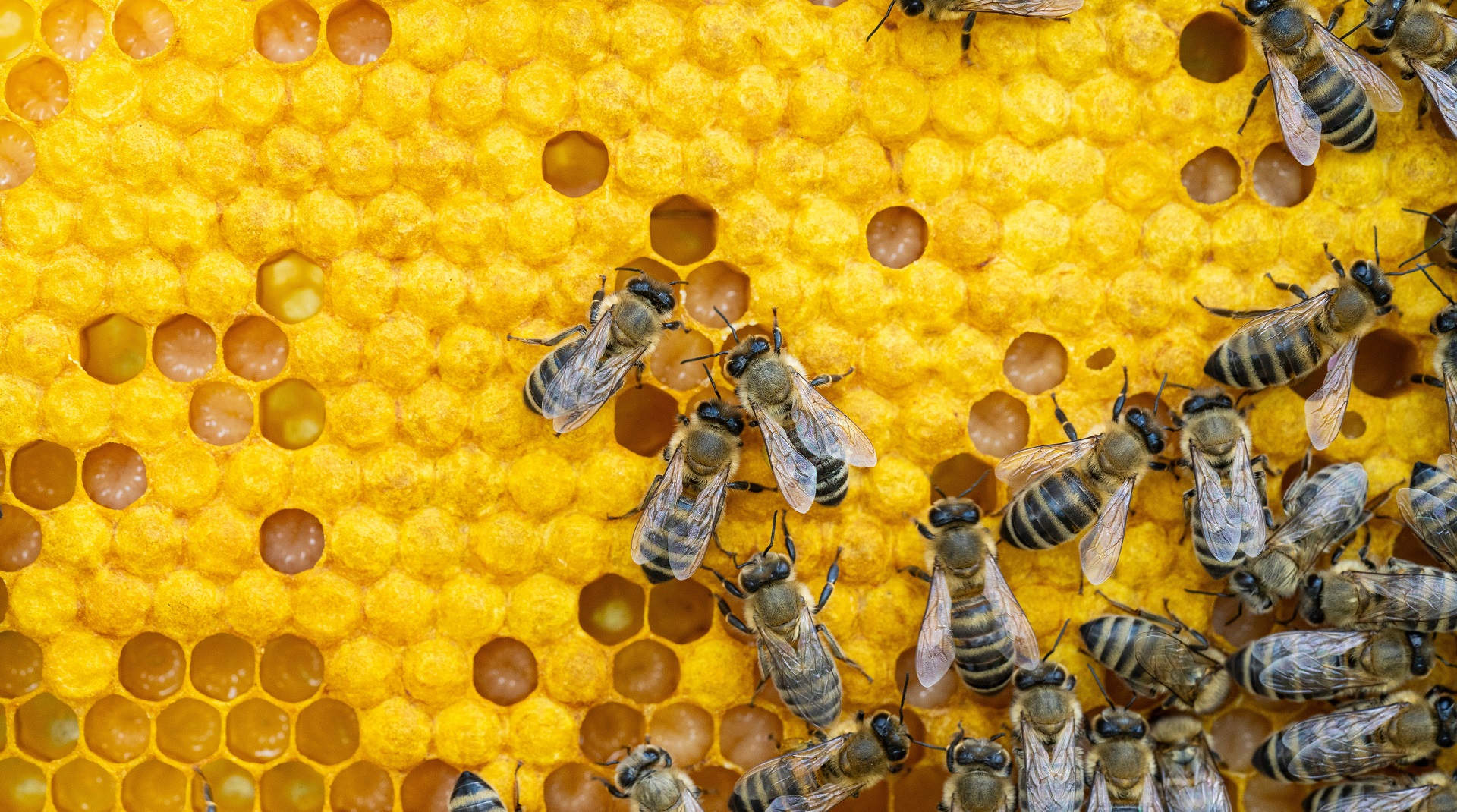While we can’t grow larger ears like the desert fox or elephant to radiate heat, we could learn from nature to solve some of the problems of a warming world.
Here are five ways nature has inspired methods to beat the heat.
From beetle to ultra-
white ceramic
Basic physics tells us that lighter colors absorb less light than darker ones, and therefore remain cooler. While ultra-white paints exist and reflect over 95 percent of the sunlight that hits them, regular paint suffers from durability issues when exposed to the elements on the outside of buildings.
Researchers at City University of Hong Kong developed a passive radiative cooling ceramic that can drastically cool buildings by reflecting sunlight and heat. The ceramic makes it tough and hardy, and the team says it should be relatively easy to scale up for mass production.
“Our work on cooling ceramic takes inspiration from the bio-whiteness observed in the whitest beetle,” lead author Zuankai Wang says.
“Nature offers us an abundance of intricate designs, efficient systems and sustainable solutions that have evolved over millions of years.”
The ceramic is based on the exoskeleton of the Cyphochilus, a genus of beetles with unusually bright white scales. The filaments that make the scales are just a few micrometers thick and tightly packed, which scatters almost the entire spectrum of light efficiently. Copying this structure allows the team’s ceramic to achieve a solar reflectivity of 99.6 percent.
Termites invented
air conditioning
If you compare the height of some of the biggest mounds with the termites that build them, it would be the equivalent of four Burj Khalifas stacked on top of each other compared with humans.
Much like the Burj Khalifa would be unbearable in the desert heat without air conditioning, so too would the termite mound. To combat this, the insects build a series of air pockets throughout, creating ventilation via convection.
A shopping mall in central Harare, Zimbabwe, copied the design of a termite mound in its architecture to develop a self-cooling system. The Eastgate Center has no conventional air-conditioning or heating systems and uses less than 10 percent of the energy of a conventional building the same size. As termites constantly open and close a series of heating and cooling vents in the mounds throughout the course of the day, so too does the Eastgate Center as outside air is drawn in through vertical ducts on the first floor and either warmed or cooled by the building mass depending on which is hotter, the concrete or the air.
Petal to
the metal
Anna Laura Pisello, University of Peurgia, Italy, thought the botanical world might offer solutions toward mitigating urban heat island effects.
“We first discovered several similarities between building systems and botanical systems, in particular flowers,” Pisello says. “Galanthus nivalus is a bell-shaped ‘hanging flower’ with white oblong flowers that bend to the ground.”
Pisello says urban geometry plays a particular role in establishing energy consumption and heating and cooling. The denser an area, the hotter it gets.
Flowers and their pollinators benefit from the warm air in the center of the flower, an observation at odds with the experience of residents in an urban heat island at the center of a city, but a study in light-colored flowers found that Galanthus nivalus exhibits a cooling effect. Infrared cameras showed a uniform temperature across the flower of 2.7 degrees lower than ambient. While researchers aren’t sure why this happens, the directional reflective property of the petals has been suggested as a possible contributor.
“A building envelope (all the building components that separate the indoors from the outdoors) is similar to flower petals,” Pisello says.
“Buildings surrounded by buildings in close proximity are like the layout of petals and building occupants interact in and among buildings, while pollinators forage inside flowers.”
Pisello thinks these flowers may have microstructures in the petals that reflect solar radiation out and keep the intra-floral area cool. When she took a picture of the flower, she observed a shiny lighting effect across the curving flower petals from the camera flash and says materials with such optical features could be possible solutions for building applications.
Copy the
chameleon
“Architects spend a lot of time and effort trying to solve their design problems. Actually, they just need to look at and learn from the surrounding environment,” says Yasmin Eid of Sinai University.
In looking at biomimicry, she points to the hexagonal-shaped building façade that drew inspiration from the chameleon and took first place in a competition for a mixed-use office building in Dubai.
Designed by Wanders Werner Falasi consulting architects, the building’s façade is made of hexagons that mechanically adapt to the sun’s trajectory. If they get too hot, they close. Each hexagon has fixed solar nano-cells in the exterior walls that collect sunlight during the day.
Any energy that isn’t used to run the building during the day is used to illuminate thousands of LEDs at night, like a chameleon changing color.
After all, chameleons don’t change color due to their mood, but for thermoregulation and camouflage. Eid says the chameleon can avoid about 45 percent of sun rays simply by changing colors. The cells in the skin that can do this are called chromatophores and are roughly hexagon-shaped, inspiring the hexagon façade of the Dubai office building.
Forestation to
fenestration
Mark Edward Alston’s research draws inspiration from trees and natural systems to improve glass building materials.
Specifically, the University of Salford Manchester researcher’s work focuses on designing intelligent glass surfaces that can manage solar absorbance and fluidic conductivity for better energy management, in a similar way that tree leaves manage sunlight.
His composite glass material absorbs solar energy to reduce heat gain inside buildings in the same way leaves absorb sunlight for photosynthesis but minimize the heat absorbed.
An adaptive layer in the glass dynamically adjusts to different environmental conditions to maximize efficiency.
Just as plants use a vascular system to distribute nutrients and water, the glass uses a fluidic network to manage heat, circulating a cooling fluid in real time based on the external temperature and sunlight intensity.
His approach aims to transform building facades into more adaptive and responsive energy systems, mirroring the multifunctional and self-regulating properties of trees.
“To truly create pioneering smart cities, at the forefront of low carbon production, could we embrace new bio-inspired technology solutions?” Alston asks. “These principles to actively manage the surface temperature of glass could change our buildings into climate modifiers and contribute to city resilience in an increasingly unpredictable climatic world.”
More like this: Looking to nature to improve our grids












